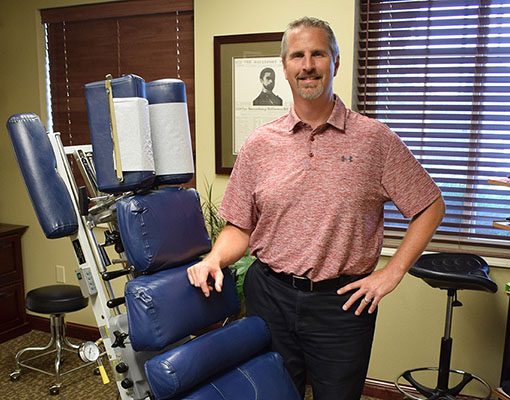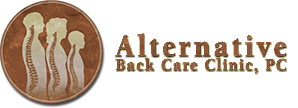Causes and Treatments
Upper Leg and Hip Pain
ILIOPSOAS SPASTICITY AND/OR BURSITIS

The iliopsoas (pronounced ill-e-o-so-ass) is a hip flexor muscle. It is responsible for bending the hip when we sit or bend forward and usually becomes overly tight in people who sit all day or bend frequently at their jobs. It attaches from the front of the lumbar spine (low back) to the hip, and as a result the tightness can lead to low back pain or front hip pain when trying to lay flat in bed or when arising from a chair after sitting. A position of flexing the leg at the hip feels better. This is often indicated in low back pain cases that do not respond to proper adjusting of just the low back and pelvis. With chronic tightening, bursitis in that area can occur (bursae are fluid-filled sacs in our joints that decrease the friction between tendons and bone; they are needed so that the tendon does not repetitively rub on the bone and become frayed). Treatment in our office consists of chiropractic spinal adjustments to subluxated (fixed) areas of the spine and pelvis, myofascial release, stretching, electric muscle stimulation, and at-home exercises.
OSTEOARTHRITIS

This usually presents in middle-aged to elderly patients. It is noticed as hip and possibly buttock, groin, or knee pain that is of unknown cause. Early symptom is stiffness which becomes markedly worse with time. Internal rotation of the hip is usually the first motion that is limited. Exercises in swimming pool and bicycling are beneficial non-weight bearing exercises. Reduction of weight is appropriate if patient is overweight.
Stretching and strengthening exercises, myofascial release techniques, and chiropractic adjustments of proper joints are used in our office for care. If a patient presents with severe joint degeneration, they will be referred for an orthopedic consult.
SUBTROCHANTERIC BURSITIS

Bursae are fluid-filled sacs in our joints that decrease the friction between tendons and bone. They are needed so that the tendon does not repetitively rub on the bone and become frayed. Abnormal movements of the hip causing changes in the proper alignment of muscles and tendons due to poor posture, degenerative joint disease, repetitive motions, or direct injury, can inflame the bursae. Most common symptoms include well-localized lateral hip pain. Often the age of the patient is between 40-60 years old and they will not be able to sleep on the involved side. Early stages of chiropractic care include pulsed ultrasound and ice with rehabilitation following improvement. Spinal manipulation of any locked joints affecting the hip is also adjusted.
Why Choose Us?

Because Dr. Bunkers LOVES his job!
-
We do not
require lengthy treatment plans
-
We treat
neck and back problems, headaches, joint problems of the arms and legs such as shoulders, knees, etc.
-
We treat
the entire family from infants to senior citizens
-
We focus
on treating the problem and getting you functioning as soon as possible
-
We help
with your insurance questions
-
We will
refer out for second opinions if your condition does not improve
